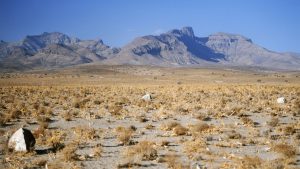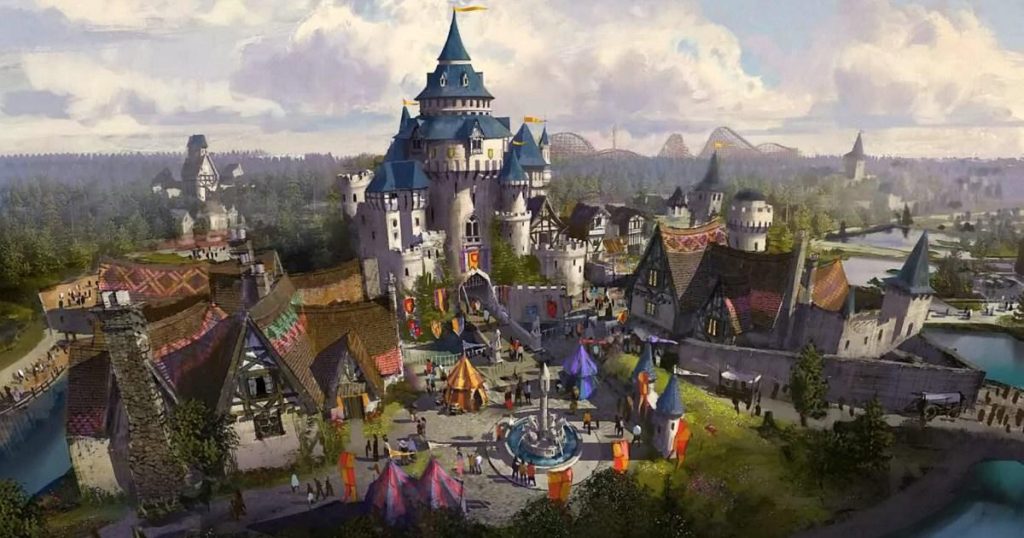The dream of a British Disneyland, a multi-billion pound theme park envisioned to rival its Parisian counterpart, has met an unceremonious end, dissolving into a quagmire of financial woes and ecological concerns. The London Resort, a project over a decade in the making, promised a spectacular entertainment destination on the Swanscombe Peninsula, boasting partnerships with major media giants like the BBC and ITV, and Hollywood studio Paramount. Visitors were lured by the prospect of thrilling rides based on popular franchises like Top Gear, Paddington Bear, and Mission: Impossible, alongside a diverse array of attractions, including medieval castles, an Aztec pyramid, and a grand theatre. However, this ambitious vision ultimately succumbed to a combination of mounting debt, legal battles, and the unexpected intervention of a rare spider.
The project’s demise unfolded in the High Court, where Paramount, a major creditor owed £13 million, initiated legal proceedings against the London Resort Company Holdings (LRCH). The court’s ruling confirmed the company’s cessation of trading, effectively extinguishing any remaining hope for the park’s realization. The judge’s decision to order LRCH into liquidation marked the final blow, sealing the fate of the once-promising venture. The park’s failure has been lamented as a “tragedy” by individuals involved, highlighting the significant investment, both financial and emotional, that has been lost.
At the heart of the project’s collapse lies a confluence of factors. The accumulation of over £100 million in debt placed immense strain on LRCH’s financial viability. Simultaneously, the designation of the Swanscombe Peninsula as a Site of Special Scientific Interest (SSSI) by Natural England presented a formidable ecological hurdle. This classification recognized the unique biodiversity of the area, which had inadvertently flourished due to the site’s prior industrial use. This seemingly inhospitable landscape had become a haven for a diverse range of flora and fauna, including the distinguished jumping spider, one of the UK’s rarest insects. The SSSI designation created a conflict between development and conservation, ultimately contributing to the project’s downfall.
Adding to the financial complexities, a dispute arose regarding the legitimacy of the company’s debt. Paramount alleged that a substantial portion of the claimed £100 million debt was a “sham” connected to Abdulla al-Humaidi, the Kuwaiti businessman who spearheaded the project until his bankruptcy. Al-Humaidi, who reportedly invested £40 million of his family’s fortune into the venture, claimed the failed project ruined his reputation and left him bankrupt. This financial controversy further complicated the already precarious situation, casting doubt on the true extent of the company’s liabilities.
The intervention of Natural England underscores the increasing importance of environmental considerations in large-scale development projects. The Swanscombe Peninsula’s unique ecosystem, a byproduct of its industrial past, became an unexpected sanctuary for various species. The discovery of the distinguished jumping spider, a rare and vulnerable insect, further emphasized the site’s ecological significance. Natural England’s decision to designate the area as an SSSI highlighted the need to balance economic development with environmental protection, a tension that ultimately proved insurmountable for the London Resort project.
The demise of the London Resort serves as a cautionary tale, illustrating the complex interplay between financial viability, environmental regulations, and legal disputes in large-scale development projects. The project’s failure leaves behind a legacy of unfulfilled promises, highlighting the challenges of realizing ambitious visions in the face of unforeseen obstacles. The once-vibrant dream of a British Disneyland, a beacon of entertainment and economic opportunity, has ultimately faded, leaving behind only the echoes of what might have been. The Swanscombe Peninsula, once destined for rollercoasters and themed attractions, will now remain a haven for the distinguished jumping spider and the diverse ecosystem it represents, a testament to the enduring power of nature.











